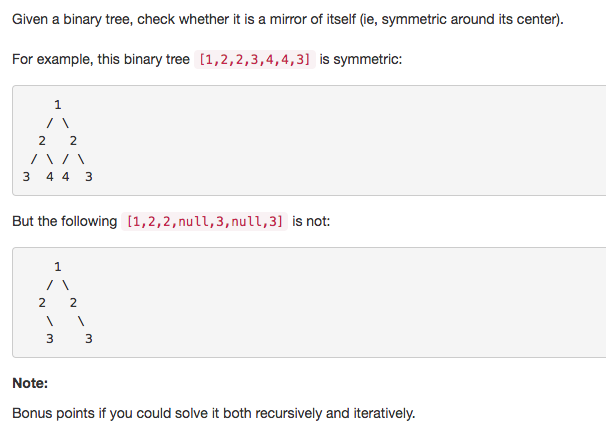
图源:新生大学
题目:
https://leetcode.com/problems/symmetric-tree/
分析:
Input: So, we're given a binary tree.
**Output: ** If it's symmetric, we will return True, otherwise False.
**Corner case: ** If the tree is null, the output is True.
**Core case: **
The primitive idea is that, we may use two Deque on each level.
1st one is for left part, 2nd one is for right part.
In 1st one, we add from first left child, at the same time, in 2nd one, we add from first right child.
Then compare the two nodes, if their values are same, then pop them together.
And continue to next child on this level.
Or, we can apply a helper function to optimize this process.
Every time we feed two parameters, 1st one is the most left child node, 2nd one is the most right child node.
If they are both null, they fit the condition.
If they are different, including the case that one is null, another has value, of course it's not symmetric.
If they have same values, then move to next level, where we should compare one.left with two.right, as well as, one.right with two.left. And make sure they are both True, the result can be True.
Java
/**
* Definition for a binary tree node.
* public class TreeNode {
* int val;
* TreeNode left;
* TreeNode right;
* TreeNode(int x) { val = x; }
* }
*/public class Solution { public boolean isSymmetric(TreeNode root){ //corner case
if ( root == null ) return true;
//core logic
return isSymmetric(root.left, root.right);
}
//helper function
public boolean isSymmetric(TreeNode one, TreeNode two){ //base case
if( one == null || two == null ){ if ( one == two ) return true; else
return false;
}
//current layer
if ( one.val != two.val ) return false; //next layer
else
return isSymmetric( one.left, two.right ) && isSymmetric( one.right, two.left );
}
}

 随时随地看视频
随时随地看视频



